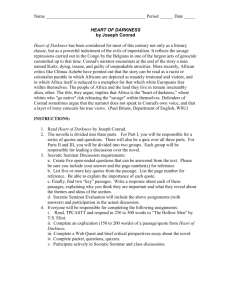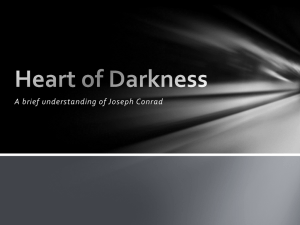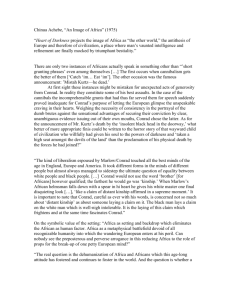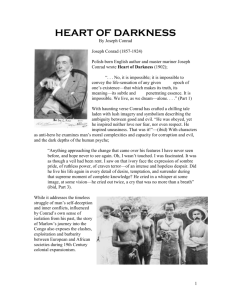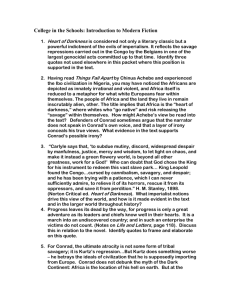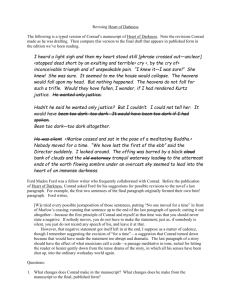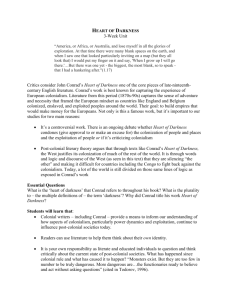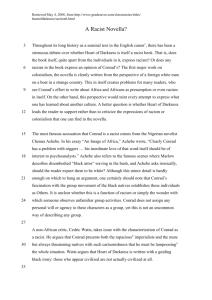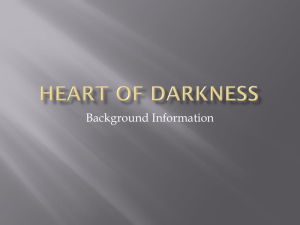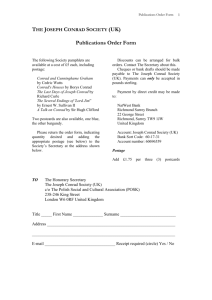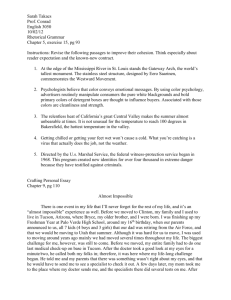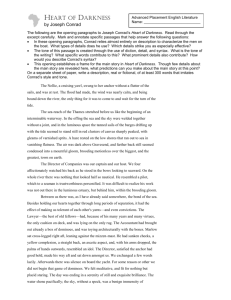UNIT 3
advertisement
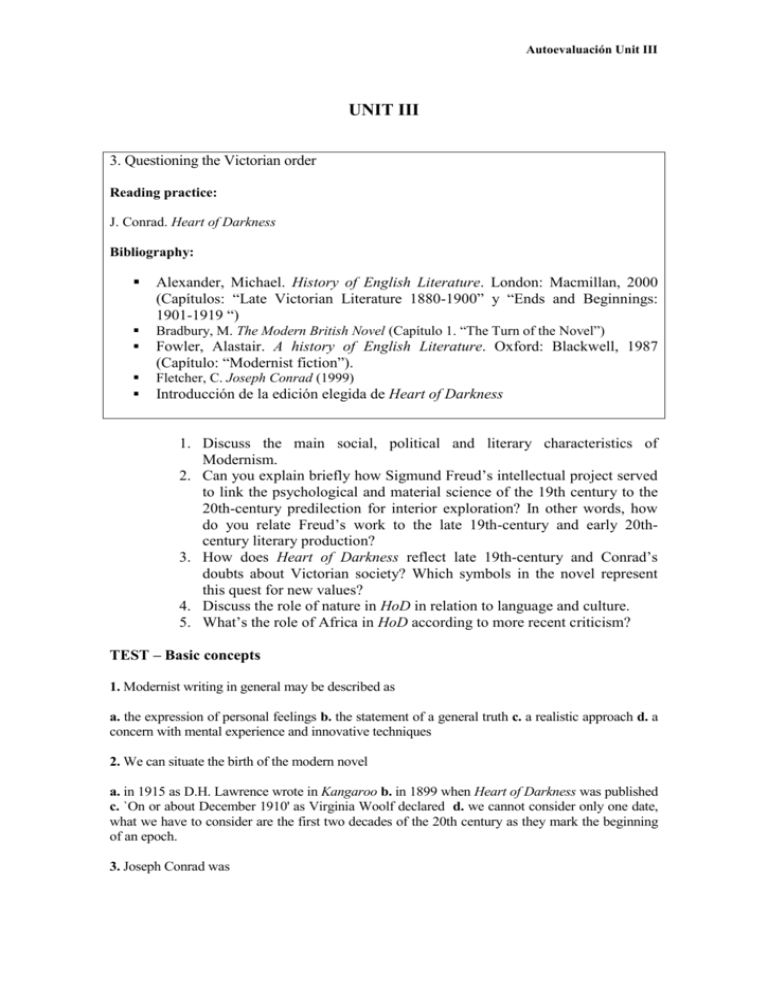
Autoevaluación Unit III UNIT III 3. Questioning the Victorian order Reading practice: J. Conrad. Heart of Darkness Bibliography: Alexander, Michael. History of English Literature. London: Macmillan, 2000 (Capítulos: “Late Victorian Literature 1880-1900” y “Ends and Beginnings: 1901-1919 “) Bradbury, M. The Modern British Novel (Capítulo 1. “The Turn of the Novel”) Fletcher, C. Joseph Conrad (1999) Fowler, Alastair. A history of English Literature. Oxford: Blackwell, 1987 (Capítulo: “Modernist fiction”). Introducción de la edición elegida de Heart of Darkness 1. Discuss the main social, political and literary characteristics of Modernism. 2. Can you explain briefly how Sigmund Freud’s intellectual project served to link the psychological and material science of the 19th century to the 20th-century predilection for interior exploration? In other words, how do you relate Freud’s work to the late 19th-century and early 20thcentury literary production? 3. How does Heart of Darkness reflect late 19th-century and Conrad’s doubts about Victorian society? Which symbols in the novel represent this quest for new values? 4. Discuss the role of nature in HoD in relation to language and culture. 5. What’s the role of Africa in HoD according to more recent criticism? TEST – Basic concepts 1. Modernist writing in general may be described as a. the expression of personal feelings b. the statement of a general truth c. a realistic approach d. a concern with mental experience and innovative techniques 2. We can situate the birth of the modern novel a. in 1915 as D.H. Lawrence wrote in Kangaroo b. in 1899 when Heart of Darkness was published c. `On or about December 1910' as Virginia Woolf declared d. we cannot consider only one date, what we have to consider are the first two decades of the 20th century as they mark the beginning of an epoch. 3. Joseph Conrad was Autoevaluación Unit III a. an Irishman who wrote in French b. a Pole who wrote in English c. a Frenchman who wrote in English d. an Englishman who wrote in Polish 4. Conrad's works have been defined as `janiform' because a. of the Roman god Jan who was considered to be the protector of seamen and Conrad always wrote about sea journeys b. because of the Roman god Jupiter the two faced god who looks in opposite directions, like Conrad's novels c. because of the Roman god Janus the two faced god who looks in opposite directions, like Conrad's novels d. because of the Greek god Janus the two faced god who looks in opposite directions and is also considered to be the protector of seamen. 5. Conrad's novels anticipated 20th century anxieties and preoccupations because a. they were all written between the last years of the 19th century and the first two decades of the 20th century b. because they deal with economic and cultural imperialism, with irrationality in the self and with problems of moral affirmation c. because they deal with the idea of the journey in an epoch when everybody started to travel abroad and Marlow is the example of this human necessity to move d. because they are in favour of economic imperialism and described the necessity of exploiting new countries as Kurtz was doing 6. The use of the narrator which develops Conrad is called a. straight narration b. first person narration c. middle narration d. oblique narration 7. The river journey in Heart of Darkness means that a. apparently we are travelling towards some significant truth which we cannot discover in the end b. we are surely travelling towards the only possible truth which we actually discover at the end of the journey c. we are travelling just to discover some new regions and to meet Kurtz d. it does not mean anything. Marlow has to get to the station someway.
